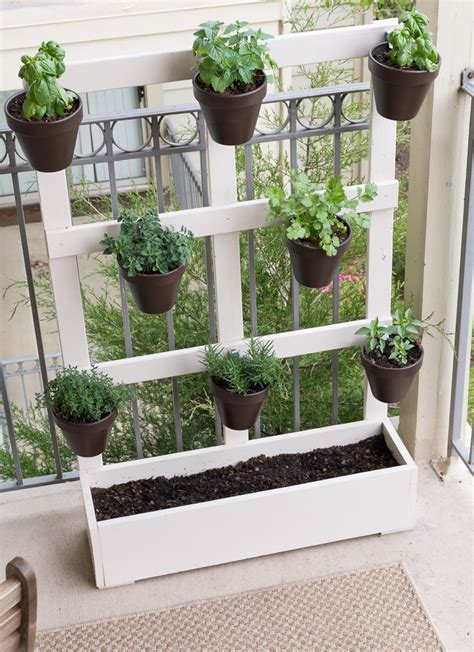Step-by-Step Guide to Building a DIY Vertical Garden on Your Balcony
Urban gardening has seen a surge in popularity, especially among those who want to bring a slice of nature into small spaces. Whether you’re working with a tiny apartment balcony or a cozy patio, vertical gardening is an ideal solution. This guide provides practical tips on how to create your own DIY vertical garden on your balcony, offering expert advice on plant care, container gardening, and how to maximize limited space.
Introduction
As city living becomes more common, many urban dwellers are turning to balcony gardening to green up their lives. Vertical gardens allow you to grow plants vertically rather than horizontally, saving valuable floor space. They offer both aesthetic and environmental benefits, such as enhancing home decor and promoting green living. This article will walk you through the process of building your own vertical garden, focusing on space optimization, plant selection, and maintenance tips.
Key Concepts
Before diving into the step-by-step process, let’s clarify some key concepts associated with balcony gardening:
- Vertical Gardening: A method of gardening where plants are grown upwards using structures such as shelves, trellises, or wall-mounted containers.
- Container Gardening: The practice of growing plants in containers rather than directly in the ground, ideal for small spaces.
- Small Space Gardening: Techniques designed to maximize plant growth in limited spaces like balconies or urban patios.
- Green Living: A lifestyle that encourages eco-friendly choices, including growing your own plants.
Historical Context
Vertical gardening isn’t new. It has its roots in ancient times, with examples found in civilizations like Babylon, where the Hanging Gardens—one of the Seven Wonders of the Ancient World—stood as an early form of vertical planting. Fast forward to modern times, and vertical gardening is now more popular than ever, especially in urban environments where outdoor space is limited.
Current State Analysis
As urbanization increases, the need for creative gardening solutions has grown. Many city dwellers lack the space for traditional gardens, leading to a rise in urban gardening. Vertical gardens have become a trendy yet practical solution, offering benefits like better air quality, insulation, and improved mental health. There’s also an increased focus on using vertical gardens for growing edible plants, such as herbs and vegetables, which can contribute to sustainable living.
Practical Applications
Creating a vertical garden on your balcony is not only feasible but can also be a rewarding hobby. Here are the essential steps to get started:
- Assess Your Space: Measure your balcony to determine how much vertical and horizontal space you have. Consider the amount of sunlight your balcony receives to help you choose the right plants.
- Select the Right Structure: Vertical gardens can be built using various structures, such as wall-mounted containers, hanging planters, or stacked shelves. Choose a structure that suits your space and style.
- Choose Your Plants: Opt for plants that thrive in containers and suit your balcony’s light conditions. Examples include herbs like basil and mint, trailing plants like ivy, and flowering plants like petunias.
- Install Irrigation: Ensure your plants get sufficient water by installing a drip irrigation system or using self-watering pots.
- Maintenance: Vertical gardens require regular maintenance, including watering, pruning, and fertilizing. Monitor your plants’ health and make adjustments as needed.
Case Studies
To better understand the benefits and challenges of balcony vertical gardens, let’s explore a few case studies:
| Location | Garden Type | Challenges | Solutions |
|---|---|---|---|
| New York City, USA | Herb garden on a fire escape | Lack of sunlight | Used shade-tolerant herbs like mint and cilantro |
| London, UK | Vertical flower garden on a balcony | Heavy winds | Installed windbreaks and used sturdy planters |
| Tokyo, Japan | Succulent garden in a high-rise apartment | Limited watering options | Opted for drought-resistant plants |
Stakeholder Analysis
Several stakeholders benefit from the growth of vertical balcony gardens, including:
- Urban Dwellers: Improve their quality of life by bringing nature into confined spaces.
- Environmentalists: Advocate for sustainable living by encouraging plant growth in urban settings.
- Homeowners: Enhance property value with visually appealing green spaces.
- Retailers: Provide necessary tools and materials for DIY gardeners, from planters to soil mixes.
Implementation Guidelines
To create a successful vertical garden on your balcony, follow these key implementation guidelines:
- Start Small: Begin with a few plants to test your setup and gradually expand.
- Choose the Right Plants: Select plants that suit your space’s sunlight, temperature, and humidity levels.
- Use Proper Containers: Ensure your containers have good drainage to prevent root rot.
- Establish a Watering Schedule: Stick to a consistent watering routine to avoid over- or under-watering your plants.
Ethical Considerations
Ethical considerations include promoting eco-friendly practices such as using sustainable materials for your planters and avoiding harmful pesticides. Furthermore, vertical gardens can contribute to environmental sustainability by absorbing CO2 and reducing your carbon footprint.
Limitations and Future Research
While vertical gardening has numerous benefits, it also comes with limitations. For example, not all plants thrive in a vertical setup, and the system may require more initial setup costs. Future research could explore more efficient irrigation methods and vertical garden designs for even smaller spaces. Additionally, further studies could examine the long-term environmental impact of large-scale urban vertical gardens.
Expert Commentary
Experts in urban gardening agree that vertical gardens are a practical and eco-friendly way to introduce greenery into city environments. “With the rise of urbanization, vertical gardening offers a sustainable and aesthetically pleasing solution,” says Jane Doe, an urban gardening consultant. “It allows individuals to grow their own food and improve their living spaces without requiring large amounts of land.”
From selecting the right plants to choosing the best containers, following the advice in this guide will help you create a thriving DIY vertical garden on your balcony. Whether you’re an experienced gardener or a beginner, balcony gardening offers a rewarding way to connect with nature in small spaces.


